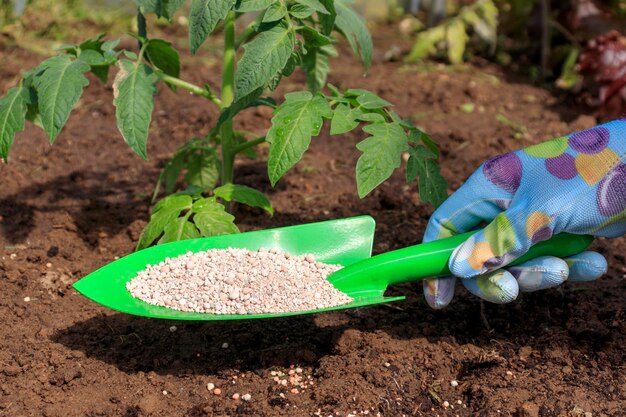Fertilizer application is a key aspect of crop management and essential for boosting soil fertility and promoting healthy crop growth. In South Africa, where farming practices are diverse and resources can sometimes be limited, improper fertilizer use can lead to reduced crop yields, environmental degradation, and unnecessary costs. Many farmers make common mistakes in fertilizer application that hinder their productivity and profitability. This article highlights 10 common fertilizer application mistakes and provides guidance on how to avoid them.
1. Overapplication of Fertilizers
One of the most common mistakes is applying more fertilizer than necessary. Overapplication of fertilizers can lead to nutrient imbalances, which can damage crops and the surrounding environment. Excess nutrients, particularly nitrogen, can leach into groundwater, causing pollution, and runoff into water bodies, leading to eutrophication.
Solution: Always follow the recommended fertilizer application rates for each crop type, taking into account soil tests. Use the right type and amount of fertilizer to match your crops’ needs. Conduct regular soil tests to understand nutrient deficiencies and adjust accordingly.
2. Underapplication of Fertilizers
On the other hand, underapplying fertilizers can result in nutrient deficiencies that stunt crop growth and reduce yields. Many farmers, in an effort to save costs, may under-apply fertilizers, which can result in poor plant development and reduced harvest quality.
Solution: Be sure to apply the correct amount of fertilizer based on soil test recommendations. Use a balanced approach and avoid cutting corners on fertilizer, as the cost of underperforming crops can outweigh any savings made on fertilizers.
3. Failure to Consider Soil Type and pH
Different soil types have different nutrient-holding capacities. For example, sandy soils tend to leach nutrients quickly, while clay soils can hold nutrients for longer. Additionally, soil pH plays a significant role in nutrient availability. Applying fertilizer without considering soil type or pH can lead to ineffective nutrient uptake by plants.
Solution: Regularly test your soil to determine its nutrient content and pH level. Adjust your fertilizer application accordingly. For example, acidic soils may require lime to adjust pH levels before applying fertilizers to optimize nutrient availability.
4. Ignoring Crop Nutrient Requirements
Different crops have different nutrient needs throughout their growing cycles. Applying the same fertilizer blend to all crops, regardless of their specific needs, can result in either over- or under-supply of certain nutrients. This can harm crop health and reduce yield potential.
Solution: Understand the specific nutrient requirements of each crop in your field. Adjust your fertilizer application based on crop type, growth stage, and expected yield. For instance, legumes typically require less nitrogen than other crops, while high-yield crops like maize may require more intensive fertilization.
5. Incorrect Timing of Fertilizer Application
The timing of fertilizer application is critical for maximizing nutrient uptake by crops. Fertilizing at the wrong time can lead to nutrients being unavailable when crops need them most. For example, applying fertilizers too early or too late in the growing season can lead to nutrient loss through leaching or evaporation.
Solution: Apply fertilizers at the appropriate stages of crop growth. For instance, apply nitrogen-rich fertilizers at the early vegetative stage, phosphorus during planting, and potassium during the flowering or fruiting stages. Follow the advice from agricultural experts or extension officers to get the timing right.
6. Failure to Apply Fertilizers Evenly
Uneven fertilizer application can lead to patches of the field receiving either too much or too little fertilizer. This can cause inconsistent crop growth, resulting in uneven yields and increased susceptibility to pests and diseases.
Solution: Use calibrated spreaders and ensure that fertilizers are applied uniformly across the field. If you’re using liquid fertilizers, ensure proper distribution through sprayers. If necessary, consider investing in precision agriculture technologies to monitor and optimize fertilizer application.
7. Not Using the Right Fertilizer for the Right Situation
Not all fertilizers are suitable for every crop or condition. For example, applying high-nitrogen fertilizers to drought-stressed crops or using fast-release fertilizers on soils prone to leaching can waste resources and harm crops.
Solution: Choose the right type of fertilizer for your specific conditions. Slow-release fertilizers are ideal for sandy soils, while controlled-release fertilizers may be better for soils with low nutrient retention. Ensure that the fertilizer matches your crop’s nutrient needs and the environmental conditions.
8. Using Fertilizers Without Proper Equipment Calibration
Inaccurate fertilizer application due to poorly calibrated equipment is a common issue on many farms. If your fertilizer spreader or sprayer is not calibrated properly, it can result in uneven application rates, which can damage crops and waste resources.
Solution: Regularly calibrate your fertilizer application equipment to ensure accurate and uniform distribution. Many manufacturers provide guides on how to calibrate equipment, and it is well worth the investment to ensure the right amount of fertilizer is applied.
9. Overreliance on Chemical Fertilizers
While chemical fertilizers are an effective way to meet nutrient needs, overreliance on them can degrade soil health over time. Excessive use of chemical fertilizers can reduce soil organic matter, harm beneficial soil organisms, and lead to a dependency on synthetic inputs.
Solution: Consider integrating organic fertilizers and sustainable farming practices into your routine. Use crop rotation, green manures, and compost to improve soil fertility and reduce the need for synthetic fertilizers. This can improve soil structure and promote long-term sustainability.
10. Neglecting Environmental Impacts
Fertilizer runoff can have severe environmental consequences, including water pollution, eutrophication of lakes and rivers, and damage to aquatic ecosystems. Improper application of fertilizers, particularly near water bodies, increases the risk of such pollution.
Solution: Implement sustainable fertilizer management practices to minimize environmental impact. Use buffer zones or riparian strips around water bodies to prevent runoff. Also, consider using controlled-release fertilizers or fertigation techniques to minimize nutrient loss to the environment.
Fertilizer application is essential for maximizing crop yields and maintaining soil fertility, but improper application can lead to inefficiencies, crop damage, and environmental harm. South African farmers can avoid these 10 common mistakes by applying fertilizers based on soil tests, understanding crop nutrient requirements, calibrating equipment, and choosing the right type and timing for each crop. By adopting best practices in fertilizer management, farmers can improve crop performance, reduce costs, and contribute to sustainable agriculture practices that benefit both their farms and the environment.
Join 'Farmers Mag' WhatsApp Channel
Get the latest Farming news and tips delivered straight to your WhatsApp
CLICK HERE TO JOIN






